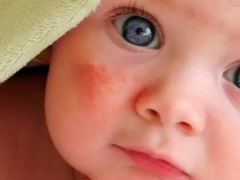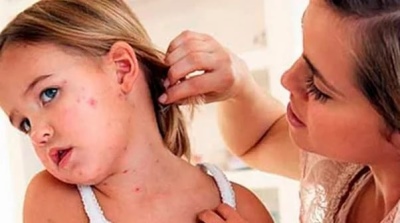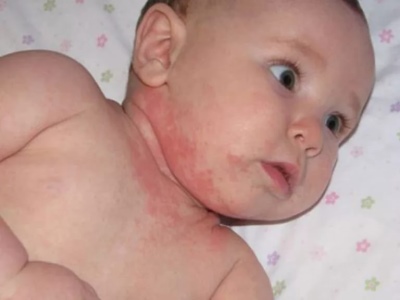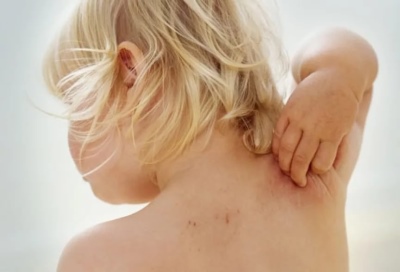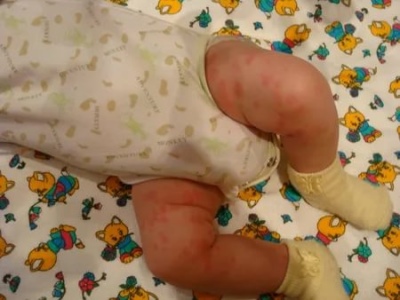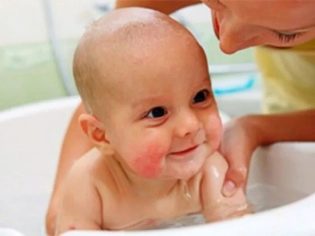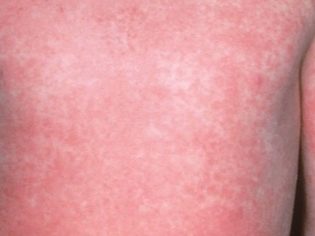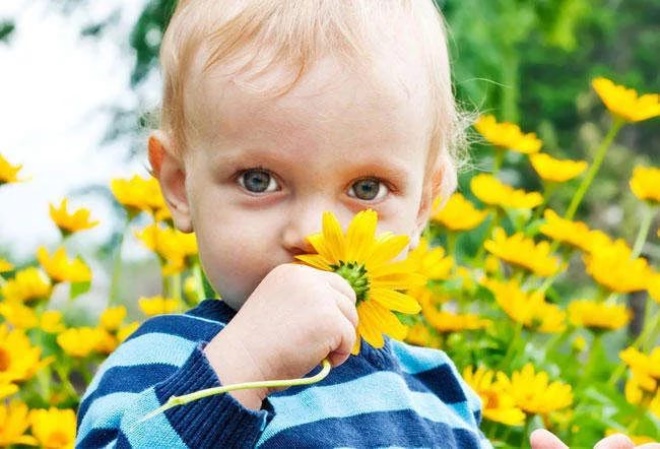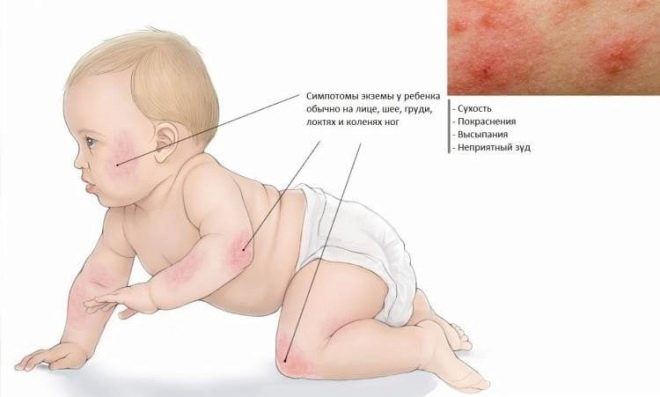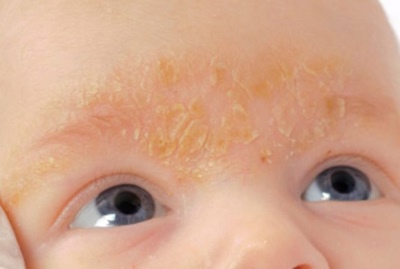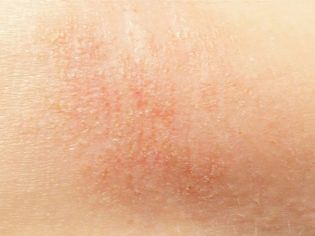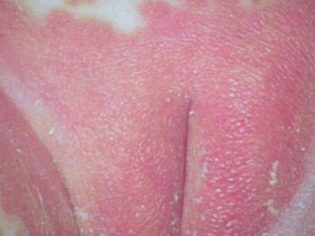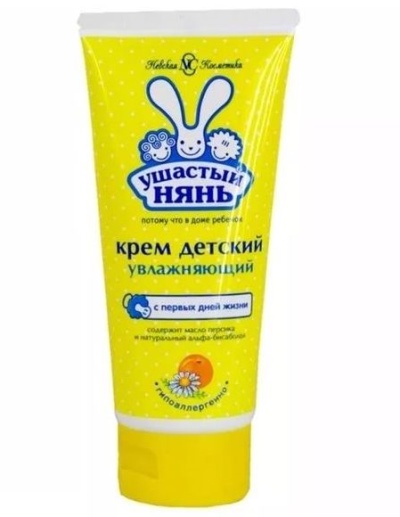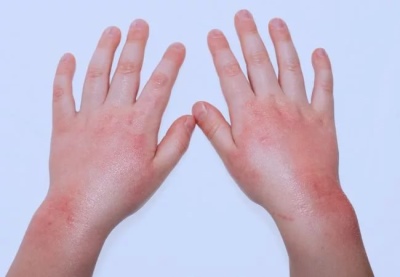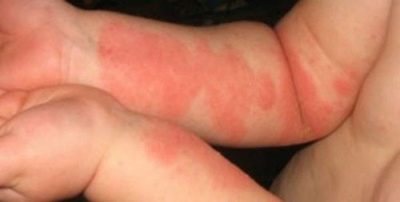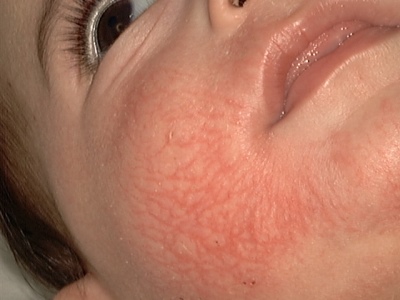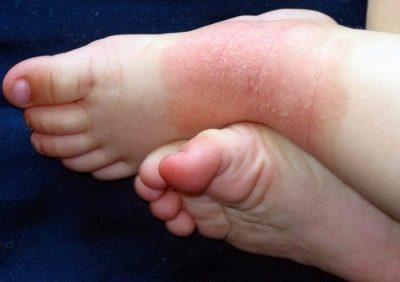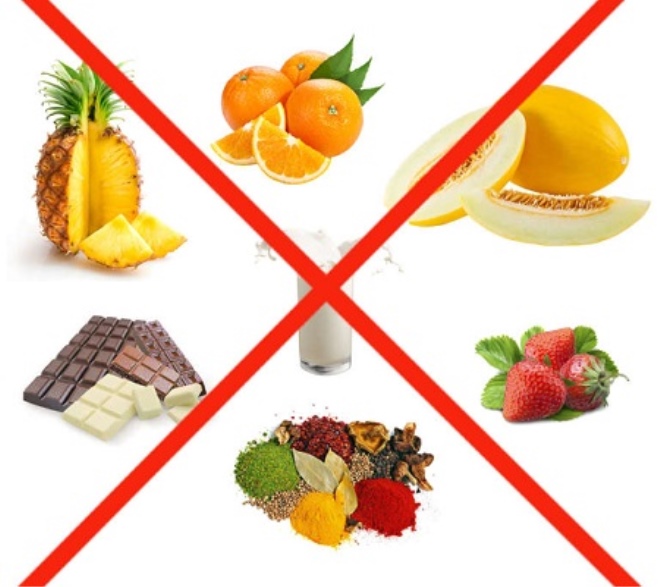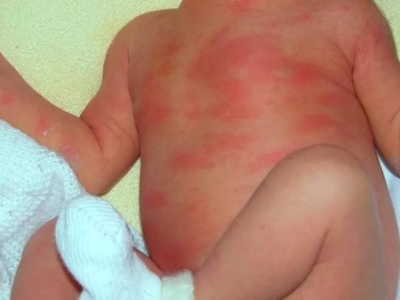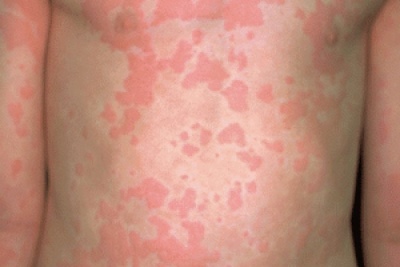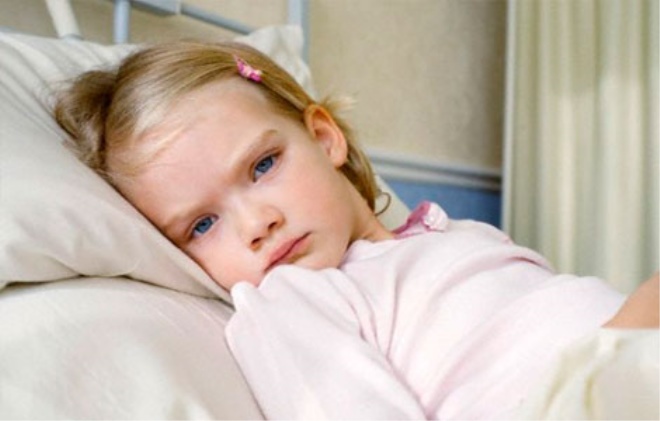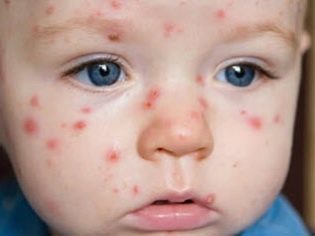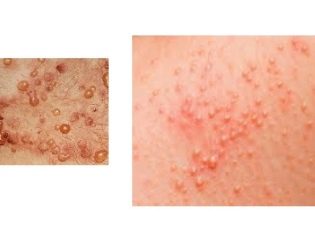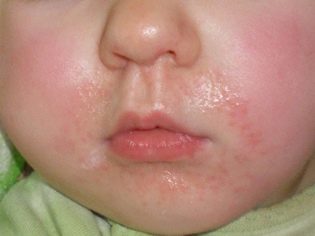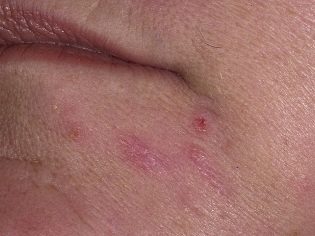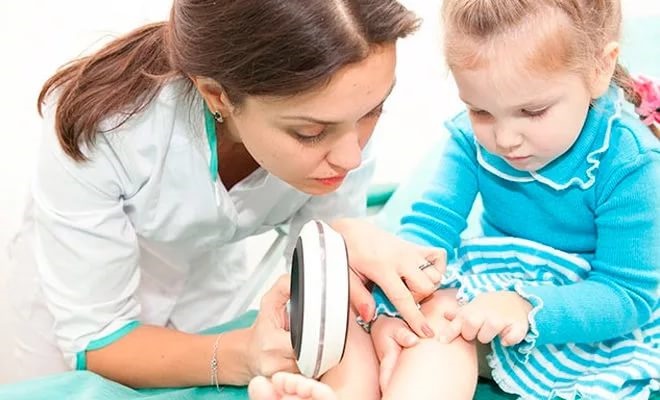What does dermatitis look like in children?
Any skin rash in a child is always alarming attentive parents. After all, a rash can be a manifestation of various ailments. Different dermatitis is most common among children. If you want to know about how dermatitis looks in children, what to do if suspicions are confirmed, read the information presented in this article.
What it is?
Dermatitis in children is very widespread, since the causes that cause inflammation of the skin are many, including bacteria, fungi, viruses, and various external stimuli. All types of dermatitis have a common mechanism of occurrence - almost always a delayed or immediate allergic reaction to a particular irritant. Therefore, dermatitis is referred to as allergic dermatosis.
Dermatitis can occur in a child of any age - in infants and in adolescents. In adulthood, the disease also occurs, but less often. This is due to the fact that the skin of the child is much softer, thinner and more vulnerable than in adults; local immunity is weaker.
Three stages of development of any dermatitis:
- Initial. It is also called acute microvesicular or macrovesicular. Irritation on the skin occurs through direct contact with an atypical irritant, disappears immediately after the termination of such contact.
- Cortical. This is the stage when liquid leaks out of the bubbles characteristic of the acute stage, a crust forms (or scales on the skin).
- Chronic. Dermatitis passes into such a stage if the contact with the stimulus does not stop and persists for a sufficiently long time.
Common symptoms
For all types of dermatitis, there are certain common signs that make it possible to suspect just such a skin ailment:
- inflammation of the skin area, redness, swelling;
- itching and burning sensation in the affected area;
- blistering; blistering;
- fairly rapid transition from the initial stage to the cortical one.
Kinds
There are the following types of this disease:
Allergic
It does not develop immediately after contact, but after a while is a delayed allergic reaction. First, the body "learns" to perceive the allergen. Already at the secondary contact a skin reaction may appear.
The peculiarity of such dermatitis is that the affected area is much wider than the area of direct interaction with the allergen. For example, a child prone to pollen allergy comes into contact with flowering plants, and he pollutes his hands, and dermatitis may occur not only on the hands, but also on the face, on the back, on the legs, on any part of the body.
Looks like allergic dermatitis quite "picturesque" - it is almost always bright red skin in the area of inflammation, blisters filled with liquid contents. They can be both small and large. There is no uniform form, the blisters tend to merge. When they burst, a coarse crust remains.
For effective treatment, it is imperative to find and eliminate the allergen that causes such a reaction in the children's body. Sometimes hormonal ointments, antihistamines, calcium preparations are indicated.
Atopic
This is a typical childhood disease, it most often affects babies. Such dermatitis is a chronic - and often genetic disorder.It has an allergic origin and often develops in children with tick-borne, fungal, food or pollen allergies, as well as with allergies to certain medications.
In complicated forms, pyoderma (pustular staphylococcal skin lesions), viral and candidal skin lesions, and linear dermatitis can be observed.
Itching with this dermatitis occurs even if there are no significant rashes. Typical places of dislocation rash - face, neck, often rashes appear in the armpits, on the elbows, under the knees, in the groin area, on the scalp and in the lobes of the ears.
Itching is worse if the child is sweating. The rash itself may be less pronounced, and can be quite bright. Visible vesicles with watery contents are practically not observed.
Baby diaper
This form of dermatitis is the lot of babies. Irritation occurs on the priest, on the genitals, in the skin folds, limited by the diaper cover area. At the same time, skin rashes never go beyond this zone. Inflammation occurs as a result of exposure to the skin of urea, ammonia. All these aggressive substances are in the urine. Especially strongly they show their properties in the interaction of urine and feces.
The rash in this form of skin disease has the form of spots with jagged edges.
Separate fragments merge with each other, when dried, form a crust. The color of the rash is from pink to saturated scarlet, the size of the vesicles is small. In the initial stage of inflammation of the formation have the appearance of moist eczema, the transition to the cortical-scaly stage occurs quite quickly.
Most of these skin problems in newborns and children in the first year of life are eliminated with the help of timely hygiene procedures, frequent changing of diapers, the use of modern disposable diapers, as well as drying and moisturizing baby creams.
Contact
It is also called simple dermatitis. It may occur when certain chemicals, household chemicals and allergens are exposed to the skin. There are children who develop photocontact dermatitis, a condition in which an external stimulus begins to be activated when directly exposed to sunlight. In children, friction dermatitis is often observed, associated with irritation by mechanical friction (for example, clothing).
Redness and rash appear during contact or immediately after contact with an irritant. The rash looks like blisters on the background of a small swelling, it is limited only by the affected area. The most successful example is a burn from contact with nettles.
Changes in the skin disappear after a very short time after cessation of contact with an aggressive substance or medium. Such a dermatitis is not dangerous.
Toxidermia
This type of dermatitis is caused by the penetration of allergens or toxins into the general bloodstream and spread in the body in this way. The disease is always caused by aggressive substances taken by the child inside. These are usually medicines, food, and chemicals. Often in childhood this reaction is manifested in antibiotics.
The appearance of a rash is always accompanied by general malaise, digestive disorders. Point bright inflammatory formations, as it were, repeat the blood path through the vessels and veins, they are often located in the direction of blood flow and resemble a vascular network on the skin. The rash may be small, punctate, it then merges into large patches of bright color. In some forms, the rash has a nodular structure.
Quite often, with the appearance of rashes, which can hit absolutely any part of the body, the temperature rises.
Eczema
Both allergens and viruses, bacteria, can cause an eczema on a child’s skin. This is a chronic disease, which from time to time makes itself felt acute. Small watery or bloody liquid bubbles appear not all over the body, but in confined spaces.When the blisters break open, a weeping inflammation remains in their place.
Most often eczema appears on the face and neck, as well as on the head, in the hairy part of it. There are many types of eczema, including dry and seborrheic. However, the clinical picture in all forms is quite similar.
Eczema is treated according to individual schemes, most often therapy involves the correction of nutrition, the exclusion of contacts with a wide list of allergens and the strengthening of immunity. Periods of exacerbation of eczema most often occur during other diseases.
Hives
This type of dermatitis is called nettle fever. It has a predominantly allergic origin, and it is not always the case that direct contact of the skin with the allergen takes place. Sometimes the appearance of a rash in urticaria is caused by a food or drug allergic reaction.
The rash in the urticaria is always accompanied by severe (almost unbearable) itching. It looks like a cluster of pale pink blisters. By themselves, they are small, but clusters of such blisters can occupy large areas on the skin. By the way, the name "urticaria" is given to dermatitis for the external similarity of a rash with nettle burns.
The rash can be located on any part of the body, quite often it appears on the arms and legs, on the face, neck, and scalp. Rashes can not be called short-lived, sometimes they persist for several weeks (for example, with an atypical form of urticaria).
In the chronic form, this problem is eliminated with hormonal ointments, local antiseptics and antihistamine medication.
Dermatitis Dühring
This dermatitis is closely related to the state of the child’s immunity. In babies with weakened protection, its appearance can be provoked by digestive disorders, as well as genetic predisposition.
The rash will be typical with small vesicles. Itching will appear a few days before the rash itself. Often a secondary bacterial infection joins dermatitis, and then self-infection is possible. When scratching, the child will open the bubbles and spread the infection to healthy skin.
Any parts of the body may be struck, the most "favorite" place of the rash with this ailment is the anatomical folds of the skin, as well as the face, arms, back.
Perioral
With such a skin disease, the lesions are localized around the child's mouth, therefore, dermatitis is also called perioral. It begins with the appearance of single red pimples on the chin or in the corners of the mouth, then the area of the lesion becomes wider. Such dermatitis is not very common.
It is often confused with the very common herpes simplex virus in childhood. Herpes rash has nothing to do with dermatitis.
findings
It is enough for parents to be able to distinguish dermatitis from chickenpox or measles. It is up to the doctor to find out in detail what type of dermatitis struck a child, since self-treatment is not welcome in any form of this group of diseases. Most often, it leads to chronic skin ailment, which is more difficult to treat even with modern medications.
How to solve the problem with allergic dermatitis in a child? The advice of the famous doctor Yevgeny Komarovsky will allow parents to quickly deal with such a problem.
